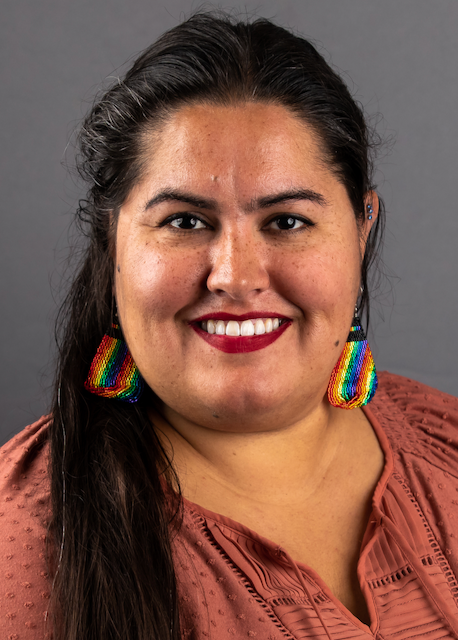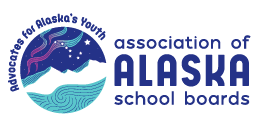Running Effective Meetings

Tiffany Jackson, Director of Membership Services
When you first signed up to become a school board member, what did you imagine the time commitment would be? Did you realize how much time it would take for you to prepare for meetings, attend meetings, and then do all the follow-up after the meeting was held? If you’re anything like me, you probably didn’t realize the time commitment needed the first time you ran for the board. Board members dedicate a lot of their time to meetings, which means board members end up spending a lot of time planning, problem-solving, decision-making, and evaluating, as these are all key elements of meetings.
Considering so much of a board member’s time is spent at meetings, it’s important to understand what a meeting is. If your district utilizes the AASB model policies (and most do), you probably have a statement similar to this in your bylaws:
“Meetings of the Board are conducted for the purpose of accomplishing district business. A meeting of the board shall consist of any gathering of the members of the board when more than three members of the board, or a majority of the members, whichever is less, are present and collectively consider a matter upon which the board is empowered to act. As a matter of district policy and state law, meetings ordinarily shall be open to the public. The board may meet in closed sessions only to discuss certain matters as permitted or required by Alaska’s Open Meetings Act.”
Here are a few tips to help your board improve the time you spend together as a board, accomplishing the district’s business, attending meetings.
1. Schedule meetings ahead of time. Adopt a yearly calendar with dates and times for your regularly scheduled meetings. When you plan the year out, it makes it easier for everyone to schedule other things going on in their lives. We also recommend adding a board retreat to do your self-assessment and annual events you want to ensure are scheduled (for example, attending the AASB Annual Conference in November).
2, Do your homework. Ensure the entire board is aware of the importance of coming to the meeting prepared to contribute to the discussions. If your district utilizes AASB’s model policy, Board Bylaw 9322 has a section touching on this importance called Board Member Preparation. This could also include letting the Superintendent know that you’re going to be asking a question during the meeting, so they’re prepared to answer it during the meeting.
3. Publicly Post All Meetings. Each meeting of the boards needs to be posted publicly before the meeting. How far ahead of the meeting is specified in your board bylaws. It’s also important to post work sessions, board retreats, and when the board is going to be attending trainings together publicly. The key to posting meetings is consistency. Post your meetings in the same manner, in the same place, and in the same amount of time before each meeting (work session, retreat, training), EVERY TIME.
4. Take Your Votes Properly. If your board is all together in person, it simplifies what kind of voting method can be utilized (you can use things like unanimous consent). However, if you have board members that attend via video or audio conference, ALL votes must be taken via roll call.
5. Properly Call You Executive Sessions. Remember, there are only four reasons a board may go into an executive session. These are:
- Matters, the immediate knowledge of which would clearly have an adverse effect on the finances of the school district,
- subjects that tend to prejudice the reputation and character of any person, provided the person may request a public discussion,
- matters that by law, municipal charter, or ordinance are required to be confidential; or
- matters involving consideration of government records that by law are not subject to public disclosure.
It’s important to remember when utilizing an executive session that the board may not take action during the executive session, other than when giving direction or an attorney or labor negotiator regarding the handling of a specific legal matter or pending labor negotiations. ALL other actions of the board must be made in a regular open meeting.
6. Keep Things Moving. The Chair is responsible for moving the meeting along, and making sure that everyone has the opportunity to be heard. That said, the Chair is also responsible for ensuring that meetings don’t end up meandering down the bunny trail. Keep debates on subject so you can make the most of your time together.
7. Keep to The Agenda. In addition to making sure that debate is kept to the issue at hand, the Chair is also responsible for ensuring any discussion is focused on the issues listed on the agenda. Any other issues should NOT be discussed, but rather added to a list for possible inclusion on future agendas.
8. Where You Sit Matters. Ensure the room the board is utilizing is arranged so all members can see each other as well as the Superintendent, while also allowing the audience to view the work of the board.
9. Utilize Parliamentary Procedures. Effective boards utilize Parliamentary procedures to ensure all voices on the board have the opportunity to be heard. Parliamentary procedures also ensure that meetings keep rolling in an orderly manner. While all board members should have a basic understanding of parliamentary procedures, at least one person should be well-versed in Robert’s rules to help with this.
10. Board Meetings are NOT Public Meetings; they are meetings that are held in public. This means you want the audience to understand how and when they have their voice heard, and the board needs to work to ensure the public does not take over its meeting. Make sure you follow your policies.
11. Show Mutual Respect and Teamwork. Remember, all your work in the school board meeting is being viewed and judged by those in attendance. The board sends a loud message to the public by how it interacts with each other at the board table. When you’re respectful of each other and the administration, you’ll accomplish more in the end, and give the public a stronger view of the board.
12. Finally, Is It Good for Kids? Ask this question of the board when every vote is called. A School board’s primary function is to take care of the needs of students, not adults. When boards begin focusing on adults and their problems, the needs of students quickly get lost. By asking, “Is it good for kids?” before every vote, you remind yourself and the board to focus on the needs of students.
